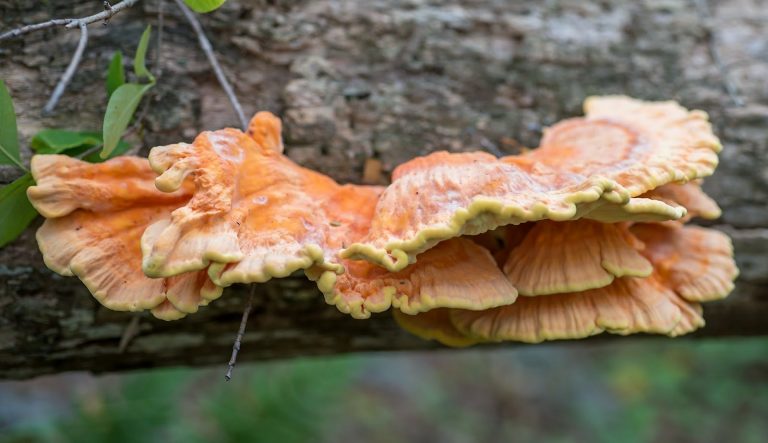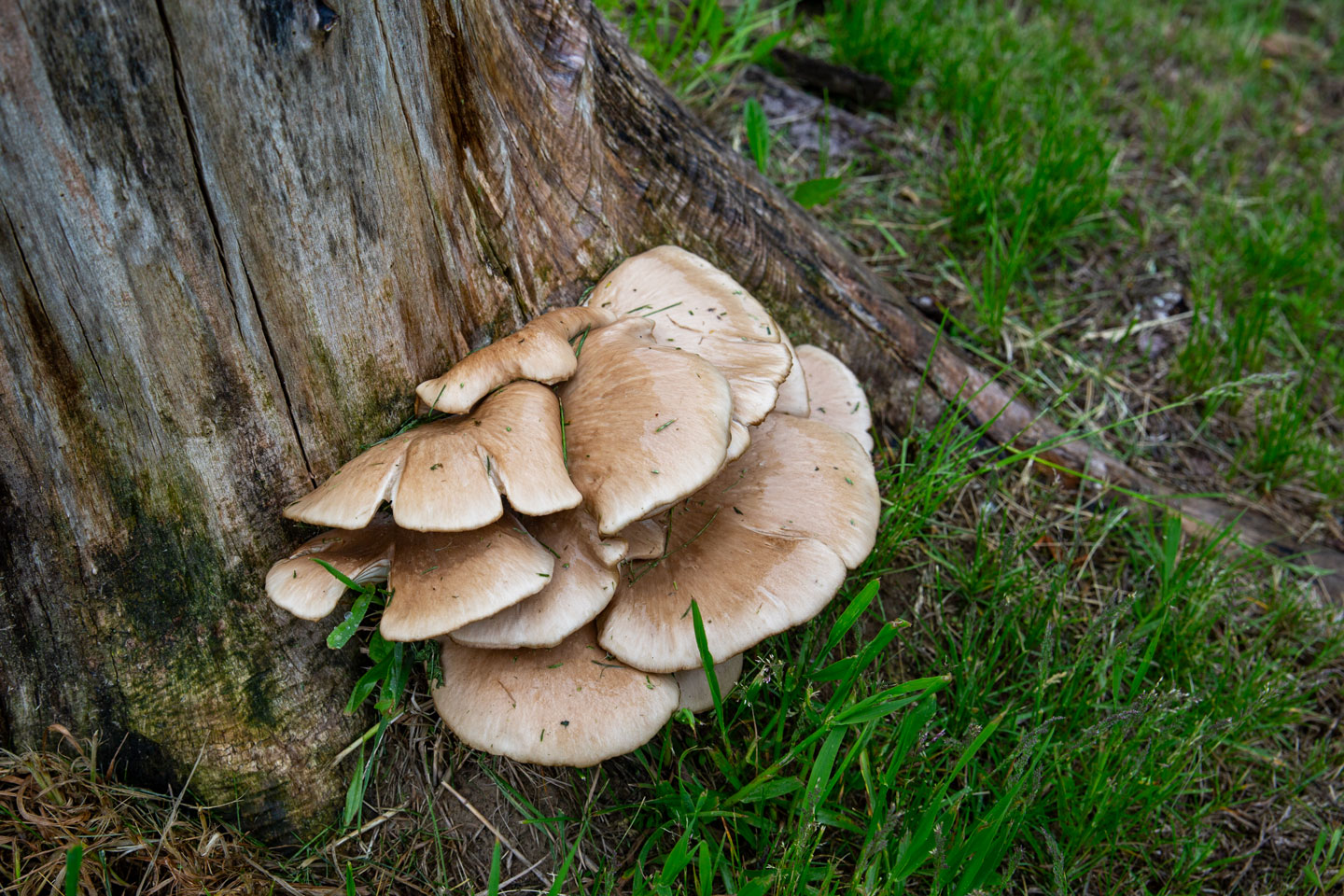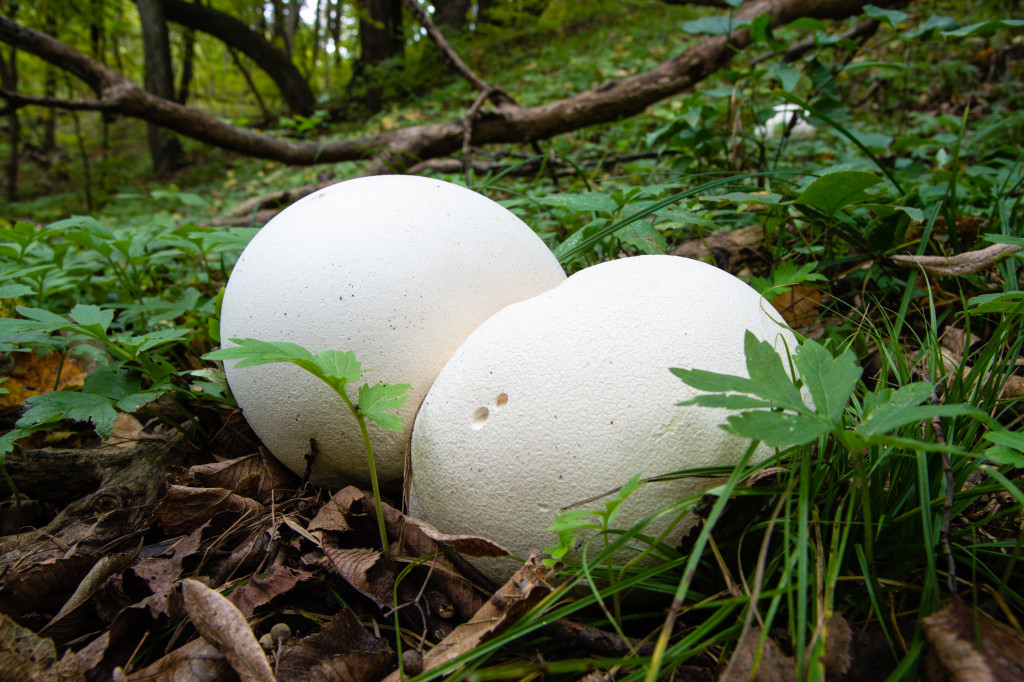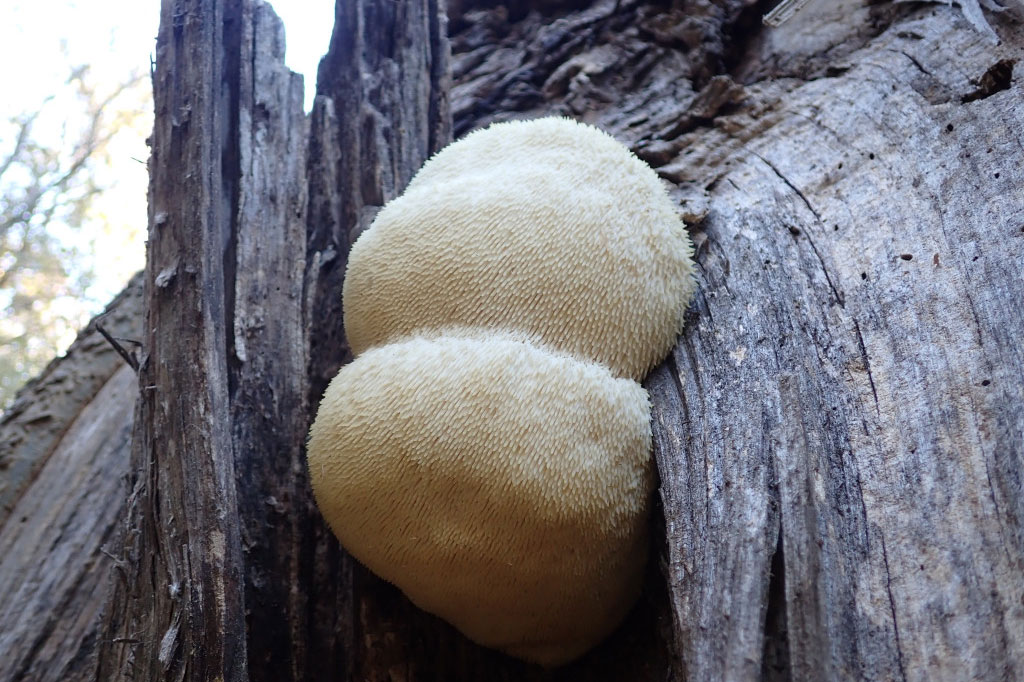
By Greg Wagner
It’s very unfair. Spring and its morel mushrooms get all the limelight, but hardcore nature enthusiasts in Nebraska know that autumn rains deliver a mushroom bounty in the woods that’s far more diverse, robust and rewarding.
Fall mushroom hunting offers a bunch of benefits, and not just for fairy tale goblins and witches, HA!
It offers a refreshing, cool walk in the woods amid fall foliage colors, a chance to better understand forest ecology, and an opportunity to see a variety of woodland wildlife, as well as an avenue to collect some delicious, healthy food for the dinner table!
Did you know there are a variety of delectable edible wild fungi species with different flavors and textures that can be harvested in Nebraska during the months of September and October?
There are.
In fact, a search for edible fall fungi tends to be more like a scavenger hunt if you are used to finding and picking morel mushrooms in the spring. One place to begin looking for fall mushrooms is on or around fallen trees and dead or decaying wood, most notably after rain. Wild edible fungi in the fall tend to be found fewer in number and farther apart though than spring morels. However, when you come across them, a nice mess can be gathered in your local woods and a good meal can be planned.
From a nutritional perspective, wild fall mushrooms are a powerhouse! Low in calories, they are rich in B vitamins and a non-fortified source of Vitamin D. Minerals such as selenium, potassium, copper, iron and phosphorus are all available in wild mushrooms. Choline, a wholesome nutrient, is also present in edible fungi. These wild edibles also possess antioxidant and anti-inflammatory properties as well as beneficial dietary fibers. However, some mushrooms, even those long proven to be edible to humans, can cause gastrointestinal troubles, other physical distress, and in rare cases, death. Some may even interact with medications, so check with your physician or allergist. Extreme caution is always advised!
As the saying goes: “There are old mushroom hunters, and there are bold mushroom hunters. But there are no old, bold mushroom hunters.” Make certain you positively identify a mushroom before consuming a small amount and remember that all mushrooms must be well-cooked and never eaten raw! For correct identification, seek reliable, credible sources. Learn your keys to properly identifying edible fungi by studying reputable field guides and apps, making a spore print and acquiring information from naturalists or longtime foragers that you know and trust. Do not use AI for final identification. If there is any doubt (as to what it is), throw it out!
The principal rule when mushroom hunting in the fall is to get to know just several species — and get to know them well. Chicken of the woods, oyster mushrooms, giant puffballs and lion’s mane are classic examples of this rule, and emerge in moist woodlands associated with rivers and creeks.
Four Edible Fall Mushrooms
Chicken of the Woods or Sulfur Shelf
Admired for its looks and distinctive flavor, this colorful, shelf-like, reef-like mushroom grows primarily with overlapping, layered, fan-shaped clumps on the dead stumps and logs of hardwood trees in mature woodlands. It may ‘pop up’ on conifers, live trees and buried roots, too. The sulfur shelf, which has no real stem, is smooth and wrinkled. Young specimens are small and sort of possess the characteristics of a finger. Typically, the chicken of the woods (Laetiporus sulphureus) shows up in the same places year after year.
The colors of chicken of the woods can be variable but are vibrant (see photo at the top of the article). It may appear reddish-orange, yellowish-orange or bright orange. The chicken of the woods mushroom does not posses gills on the underside like the poisonous jack-o-lantern mushroom.
The spore print of this mushroom is white and the spores magnified are elliptical to round.
So, how does chicken of the woods taste? Like chicken? Well, believe it or not, it is comparable to lemon chicken! It is best sautéed, baked or fried prior to lightly wiping it with a damp paper towel.
Egg dishes enhance the succulent, rich flavor of chicken of the woods.
Like any mushroom, after it is cooked, just try a little bit. Some folks have been known to have an adverse reaction.
Oyster Mushroom

The name of this mushroom is derived from its oyster-shaped cap and very short, almost missing stem. It is also close to the color of raw oysters – normally a light grayish-brown color. Some even go so far to say that this fungus has a smooth oyster-like texture with a slight hint of seafood flavor that might contribute to its namesake.
Whatever the case, the oyster mushroom (Pleurotus ostreatus) is a scrumptious, edible mushroom found in old-growth, open, leafy woods that mimics an oyster in shape and is sought after by many of us fall foragers in Nebraska.
Oyster mushrooms grow in small, tight, shelf-like groups on dying or dead hardwood trees. Some even push through bark.
The oyster is not a difficult mushroom to identify. It’s decurrent gills (those running down the stalk) are a distinguishing characteristic.
In addition, look at the tops of the oyster-shaped caps of these mushrooms. They can range from white to brownish-gray and are usually about 2–8 inches wide. Again, the undersides of the caps are covered with tightly spaced gills that run down the stubby, sometimes nonexistent, stem and are white or tan in color. “Oysters,” as they are called, can grow in substantial numbers, and many different close groupings of them can be seen on the same tree.
The flesh of the oyster mushroom is white, meaty, and firm. It has a slightly chewy texture and is soft with an aroma reminiscent of anise.
With the oyster mushroom, the spore print can be white to grayish-lilac. It’s recommended to take a spore print on both a light and dark background to best observe these colors.
By the way, it is a good idea to give oyster mushrooms a quick rinse under cold water to remove dirt and other particles.
When cooked, this mushroom possesses a mild, nutty, somewhat earthy flavor with that subtle hint of seafood.
Oyster mushrooms are outstanding when sautéed with onions and garlic that bring out its flavor. “Oysters” are also added to soups, pastas, stews and meat entrees.
Giant Puffball Mushroom

One of the easiest of all fall mushrooms to identify is the giant puffball mushroom. It is virtually impossible to miss in the wild. There are a few poisonous look-alike versions, so accurate identification is critical!
Referred to as the woodland volleyball, the round, edible giant puffball is ivory in color, with no spots or streaks of yellow or brown or any other color, for that matter. The puffball itself is the fruiting body of the fungus.
Giant puffballs should be uniformly pure, snow white inside (like a white marshmallow). There should be no other coloring. The flesh should be thick. There should be no sign of a cap or stem, only a root-like attachment at its base. Make sure to cut all puffballs in half in order to be certain that there is no sign of gills.
If gills are present, it is not a puffball but instead the “button stage” of a toxic gilled mushroom that must be discarded.
In addition, if the giant puffball is infested with insects it should be carefully trimmed in order to avoid the infested parts. Regarding the outside skin, it is easily peeled and should not be eaten if it is tough, leathery or dirty. It is key to never thoroughly wash the puffball with water either as it will soak it up like a big sponge and become extremely soggy. The giant puffball should be gently patted with a wet paper towel for cleaning purposes.
Where are giant puffballs found? Calvatia gigantea is commonly located in open deciduous forests, meadows and pastures. It can emerge in loose clusters or singularly. The giant puffball can range in size from a baseball to a basketball.
Interestingly, a traditional spore print cannot be taken from a giant puffball because its spores are produced internally. The giant puffball is only edible when the flesh is pure, solid white. By the time the spores have developed and changed color to greenish-brown, it is no longer fit to eat.
Wondering about the texture of the giant puffball? It is said to be much like soft tofu but shrinks during the cooking process. The giant puffball has a nice, delicate, nutty flavor and is prepared in a variety of ways.
It can be substituted in recipes for eggplant and makes for a great addition to soups.
A preferred cooking method for the giant puffball involves dipping long slices of the fruiting body in a wash/batter and then frying them in a small amount of olive oil. Another popular way to prepare and cook the giant puffball is to slice quarter-inch thick strips of the fruiting body that can be dipped in an egg batter, coated with flour and cinnamon and fried until golden brown similarly to French toast. Yummy!
Lion’s Mane Mushroom

Also called the bearded tooth mushroom, this is one of Nebraska’s most recognizable, identifiable fall fungi species. This distinctive, edible mushroom is round and whitish in color (yellowing or browning suggests it is past its prime) with a single clump of long, dangling tooth-like spines that resemble icicles or more so, an African male lion’s mane. It can also appear as a shaggy white clump. The mushroom’s texture is smooth with no stalk. The lion’s mane spore print is white. The spores magnified are almost round, smooth to roughen, with colorless dots.
Lion’s mane (Hericium erinaceus) grows singly or in small clusters on the trunks of living, dying and dead hardwood trees (especially oak) and on fallen trees and logs. Once found, carefully twist and pull the mushroom to harvest, avoiding cutting, if possible.
It is a highly sought-after mushroom for its delicious flavor and wonderful texture.
From a culinary standpoint, lion’s mane is tender and somewhat spongy and has sort of a mild, seafood-like flavor. Do not cut off the white spines; they add flavor. You can sear, sauté, bake or stew it, or add it to stews or salads. After brushing off dirt and using a damp cloth for the tough spots, I like to slice the lion’s mane into ¼-inch pieces and simply pan sear them in olive oil seasoned with salt and pepper.
The lion’s mane is said to possess a myriad of health benefits, from mood improvement to nerve repair. Studies even suggest that this mushroom contains two unique compounds that may help stimulate the growth of new brain cells and could have the potential to prevent Alzheimer’s and dementia.
